Miniature printing can be a great hobby to get into and it can be quite rewarding doing it with your own 3d printer. In this article we will go over some options for both FDM 3d printers and resin 3d printers. Choosing the best printer for printing miniatures can be a process, in this article we have simplified some of the printers we would recommend with pros and cons for each one and a cost breakdown as well.
Contents
What kind of printer to get for your needs
When picking a 3d printer for miniatures there are a couple things to keep in mind when you are looking to buy. First is, what kind of budget do you have? Second, what are you going to be printing? In this article we will start with the best 3d printer for terrain and then go onto the best 3d printers for miniatures. Picking the best printer for you all depends on how much you want to spend and how high of a resolution you are looking to get. A printer with a high resolution can cost more than something with standard resolution.
Below we have hand picked out some fdm and resin printers we thought would make a great start or a great addition to your 3d printer collection. Printing miniatures can be very rewarding as the print starts out as nothing and once complete a full model has appeared in front of you. There are all sorts of different possibilities to be had with a 3d printer.
Safety with 3D Printing
There are many safety requirements you should follow when you are 3D printing. FDM 3D printing is the safest, and cleanest. The safety recommendations we have for FDM 3D printing is to not touch the hot end, it is very hot when printing and do not touch moving parts on the printer when it is operating as they can create pinch points for your fingers to get pinched in.
SLA 3D printing needs a lot more care than normal fdm 3d printing. Resin can be toxic and is known to be a material you do not want to come in contact with your skin. We recommend using nitrile or latex gloves to protect your skin while you are handling prints that just came out of the printer or touching any of the uncured resin. Resin can have some side effects if you are not careful. We recommend printing in a well ventilated area as well. Resin is not good to get on your skin as it can cause irritation and burning. As well as it is not great for your skin, it is not a good idea to breathe in any fumes the resin gives off, it is also known that this can cause irritation of the lungs.
Types of 3D printers
FDM 3D printers
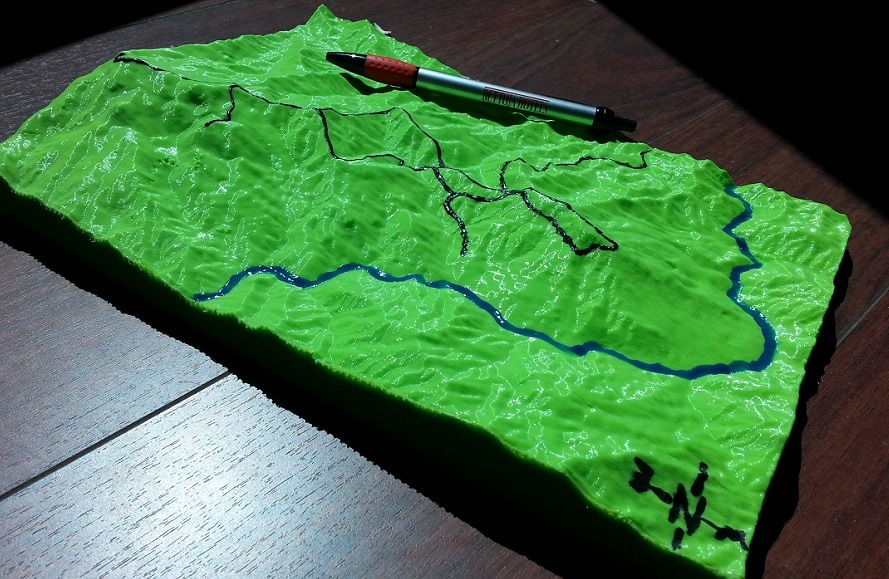
In the article we will be referencing three different types of 3D printing technologies. To start off we will talk about FDM 3D printing which is known as Fused Deposition Molding. This is where the printer uses filament and pushes it through a hot extruder onto a bed. It is done layer by layer until you have a finished print. FDM 3d printers are usually the cheapest way to get into 3d printing. FDM is usually used for 3d printing terrains and basic miniatures. The resolution of FDM printers usually is not as good as its resin competitors.
FDM printers are usually the cheapest to keep running because of how common parts are and how cheap filament is. To get started all you need is a roll of filament which typically costs anywhere from $10 USD to $30 USD.
Resin 3D Printers

SLA
Resin 3D printing can be broke down into two selections because the printers can vary. First we will talk about SLA printers and then go onto DLP 3D printers. SLA 3D printers use a special liquid resin in a tank and the build plate comes down vertically, and a laser solidifies the liquid resin onto the build plate. The build plate goes up slowly after each layer building your 3d print! SLA is the more costly of the three options because the technology used is way more advanced than the other two options. Thankfully, there are not as many moving parts on SLA 3D printers you have to worry about like with fdm 3d printers. Resin for SLA 3D printers can vary in cost and is the most costly consumable of the whole process.
DLP
DLP is the cheaper version of SLA 3D printing and is often combined into SLA 3d printing but is not SLA 3D printing. DLP uses a lcd screen to form the resin instead of a laser. The layers slowly build up from the bottom of the print bed. The level of detail a DLP machine is able to create is pretty amazing. An additional upgrade for getting a higher resolution print is to purchase a machine with a 4K display, this increased the number of pixels that get displayed in a printing process, there for increasing the details on your print.
Terrain 3D printing
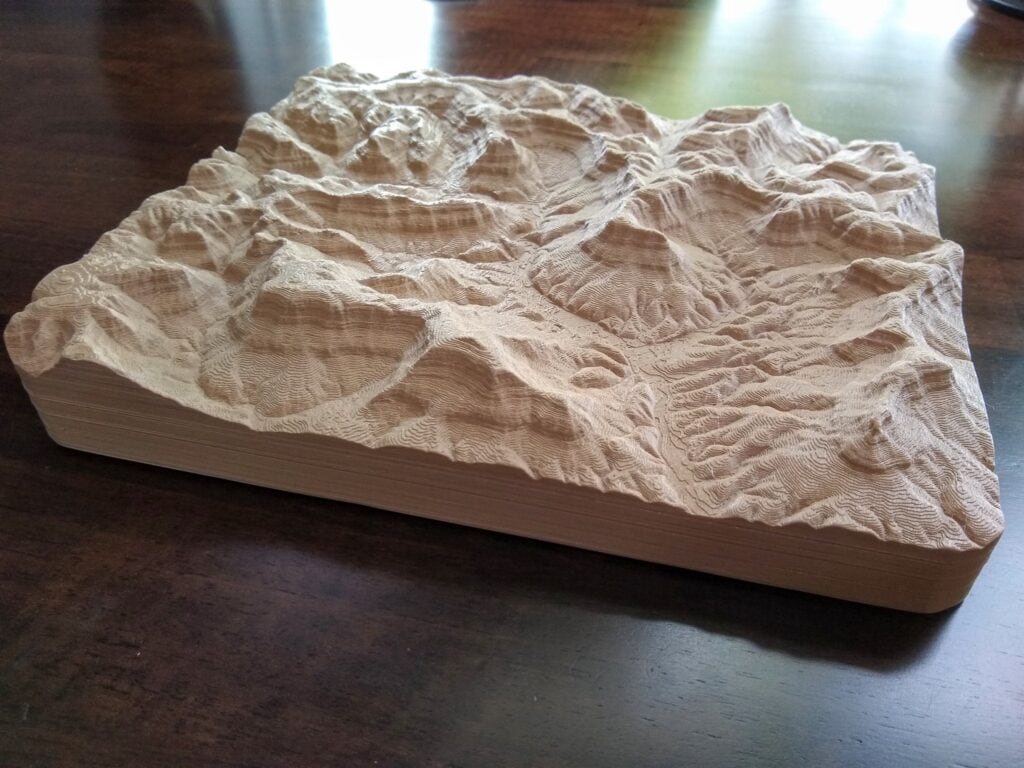
Pictured above is an example of a terrain that was 3d printed with an FDM 3D printer. FDM printers provide the best budget printers available on the market today. You can easily get started in this hobby for well under $300 USD. Printing terrain can be easily done on a FDM 3d printer and it should suffice in the amount of detail needed. FDM printers can have larger models than the resin counter parts because of the low cost to entry.
Printing speed with FDM printers is usually around the same as resin printers, where a medium sized model may take anywhere from four to five hours all the way up to ten hours.
Best FDM 3D Printers for printing terrain
Creality Ender 3 V2
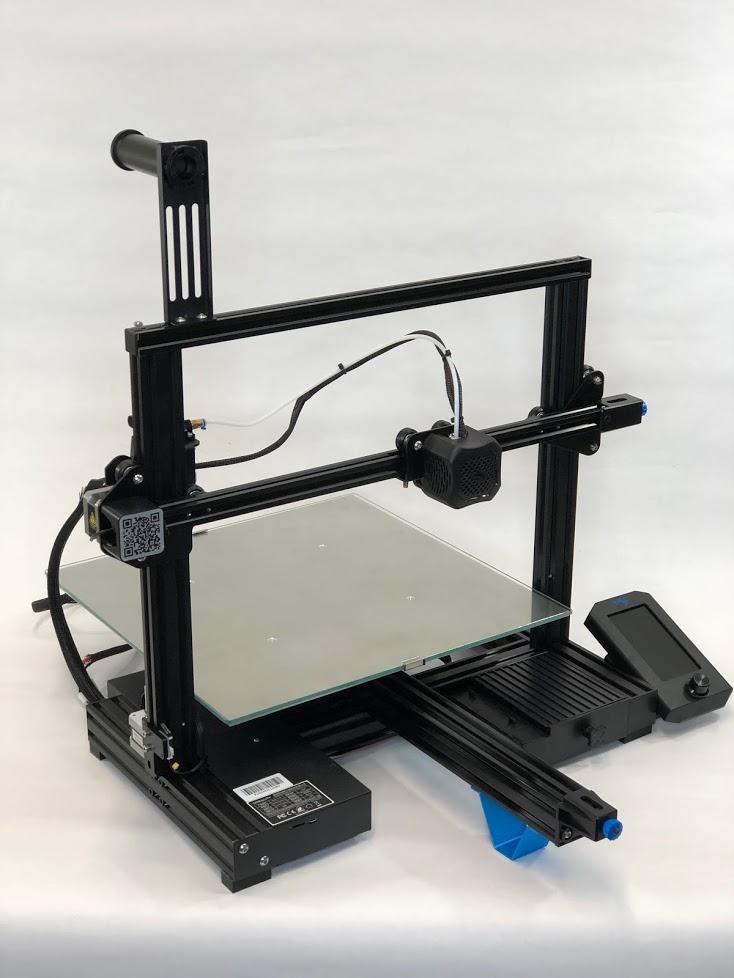
Creality’s latest offering, the ender 3 V2 is a great choice for beginners in the 3D printing space. We personally have a few and cannot recommend them enough. The ender 3 offers the best bang for the buck in the 3d printing industry.
The build volume is substantial enough for printing large terrains and if a model is too big it can easily be scaled down or split into parts with the slicer CURA. The printer is open source, which allows you to use the most popular slicing software cura or any of your choice.
The creality ender 3 v2 is capable of printing at 60mm per second
The print space is 220 x 220 x 250 mm or 8.7 x 8.7 x 9.8 inches. This allows for huge terrains to be printed.
The creality Ender 3 V2 can be picked up here
Ultimaker 3
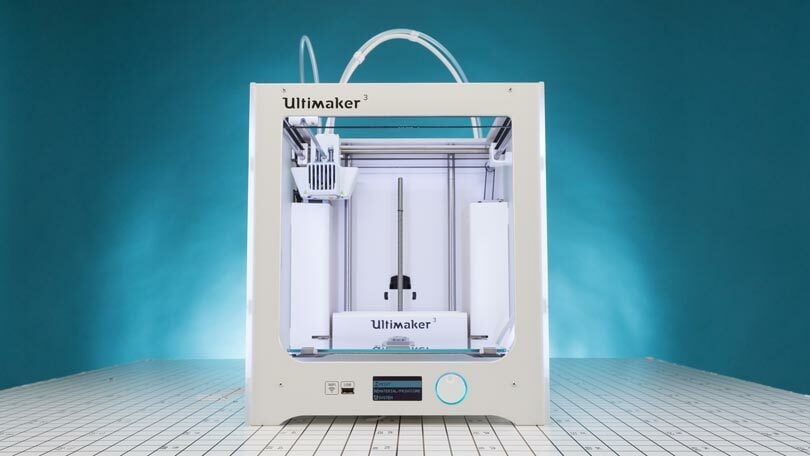
The Ultimaker is one of the best printers on the market today. It is great for people who are looking for a solid and reliable 3D printer who have a larger budget to play with. The ultimaker can be quite costly, but its a great investment if you have the money to spend.
The ultimaker is a machine that will make quick work of your models, as it supports up to 100mm per second printing speed. Large models can take forever, this will drastically speed up the process.
The ultimaker is one of the most popular brands for 3d printers and has a large reputation behind it as well as a large community behind it. The ultimaker 3 features a dual extruder, this is helpful because you can have one main filament in and then a support filament. They make special support filaments that can dissolve away in water leaving virtually zero print clean up.
The ultimaker 3 at this current time is priced at $4000 USD, which can be found here:
Miniature 3D Printing
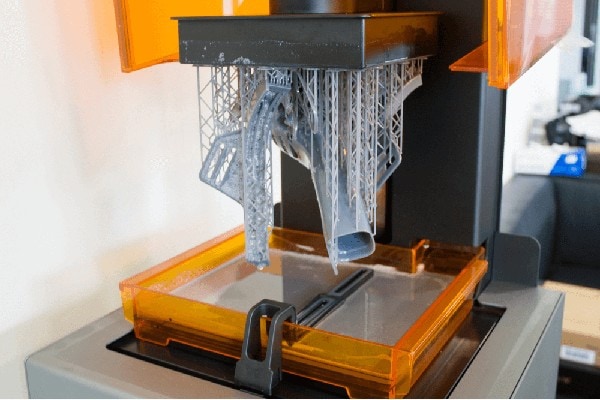
So you want to get into 3D printing miniatures? Below we have assembled a list of some of the best 3d printers for miniatures around. Resin 3D printing is beginning to get very popular now because a lot of different companies are in the space now. Before there was only one big printer brand in the industry keeping it very expensive and only allowing high end users to get their hands on the technology. Now with the competition you can easily pick up a great DLP machine for under five hundred dollars. These are some of the best value 3d printers around, comparing the cost to the details these machines can achieve blows away the FDM competition.
You should spend some time picking out the right machine and make sure its something that interests you. Resin printing can be a pain in the butt at times because of the mess resin can generate.
Safety Recommendations
We recommend always wearing gloves and the proper safety equipment when operating these machines. Another thing to keep in mind is post processing resin prints require. Before you can touch your print you have to clean it off with Isopropyl alcohol and cure the print with UV light. Both of these can be dangerous if mishandled.
Isopropyl alcohol can give off some nasty fumes and should only be used in well ventilated spaces. UV light sources can give off dangerous blue UV light that can harm the eyes if looked at directly. We recommend having the proper eye wear to protect your self.
Design your own Miniatures
Cannot find a model you like or it is not in the position you wanted? Why not design your own miniatures! Designing your own is a rewarding process and a great skin to learn how to do. Although it might take a while to learn, once you learn how to it can be a easily way to make your own miniatures. Below we have attached some resources for designing your own miniatures for your SLA printers.
Blender

Blender is a great free resource for designing your own miniatures, and is one of the most popular in the community. There are a lot of great youtube videos online to learn from. A resource we can recommend is from Blenders website where they make their own tutorials for anyone looking to get started. You can check it out here: https://www.blender.org/support/tutorials/
Finding Miniatures to Print
Finding miniatures can be just as hard as picking out the best printer for miniatures. We have made a list of some platforms to try to find some miniatures for your printer to print. As well as miniatures, there are terrains on many of these websites for you to download as well. Finding a miniature can now be made simpler. We have created a list of both paid and free ways to find miniatures.
Hero Forge
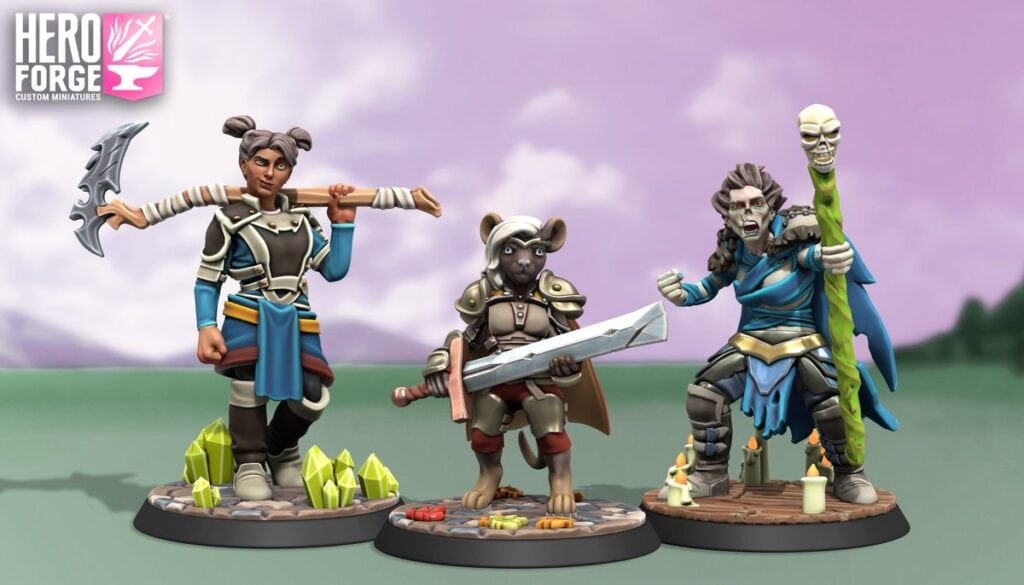
Have you ever wanted to be able to design your own miniatures? And thought how complicated it could be if done with a 3d design software, well look no further than a website called Hero Forge. On their site you are able to design and develop a 3d model for miniature printing. There are thousands of different options you can choose from, like the pose and accessories. Best of all you can create anything you want.
Miniature Customizer

Here is a miniature we created when using the site. Miniatures can now be designed super easily with this service. Getting gaming miniatures created is now super easy and not a costly endeavor anymore. You can easily purchase your STL file for $7.99, and if you do not have a resin printer you can buy them printed from the company as well.
If you are looking to print your miniature you have created or someone else’s miniature, it is as easy as downloading the model and printing.
My Mini Factory

My mini factory is a great place to find free and paid models of miniatures for resin printing. They have dedicated sections for tabletop miniatures, gaming miniatures, terrain and more. It is easy to find models with their search bar at the top of their page.
Batman Model
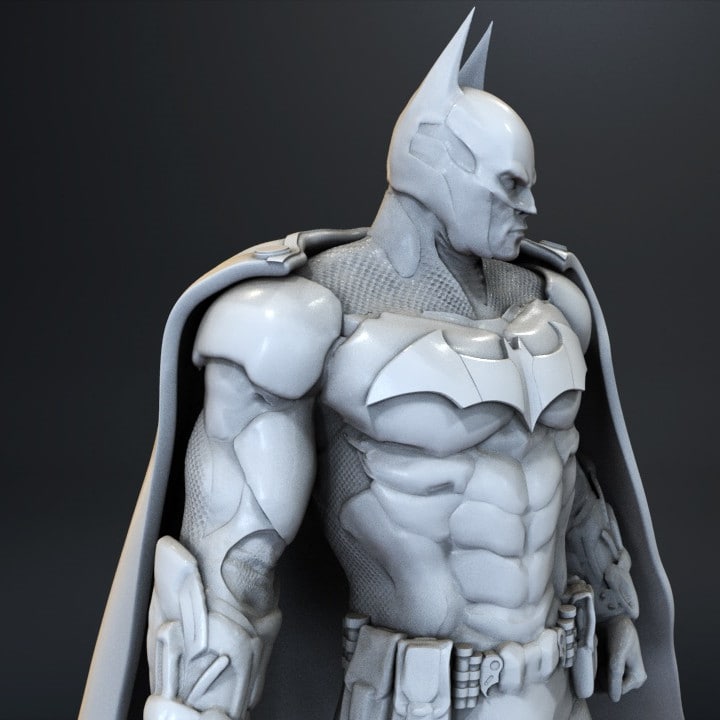
There are a lot of free models on this site. One of our favorites is this batman miniature. There are a lot of challenging features on this model that will test your resin prints limits. Something like this would only be possible to print on a resin 3d printer because of all the intricate details and features on the model. Although you can try with an fdm printer, the results would not be the same or come close to a resin printer. You can find this and many more models on My mini factory here:
Batman: https://www.myminifactory.com/object/3d-print-batman-184548
Thingiverse

Thingiverse is a 100% free website for finding models. They have a great selection of miniatures and models to chose from. There are thousands of different miniatures and terrains to chose from on thingiverse. Thingiverse is a very popular online community of model makers, a lot of these miniatures have been printed if they have been uploaded to thingiverse. You can see pictures of what other peoples results are before printing on your own, so you know that the model is even possible to 3d print. Some of the models even include supports that are added so your model is ready to go straight from download to printed model.
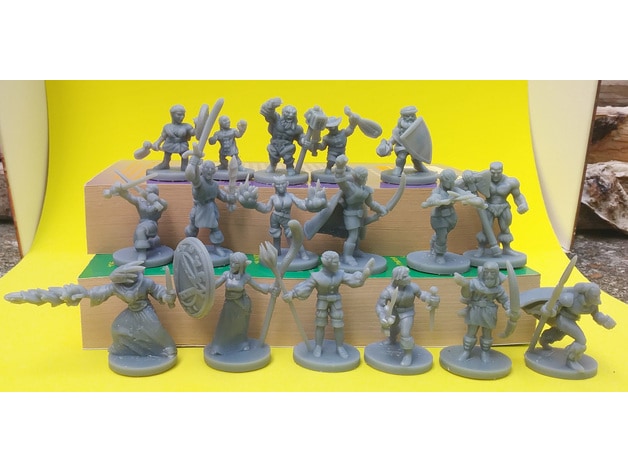
A notable miniature we found and liked on thingiverse that we think you should give a try with your resin 3d printer is not one model but a whole pack by the user Valandar. The pack is called character model pack 1 and is free to download off of thingiverse’s website. The pack gives you a variety of miniatures to chose from. Download and print this pack here: https://www.thingiverse.com/thing:3016399
Best resin printers for under $400 dollars
Elegoo Mars 2
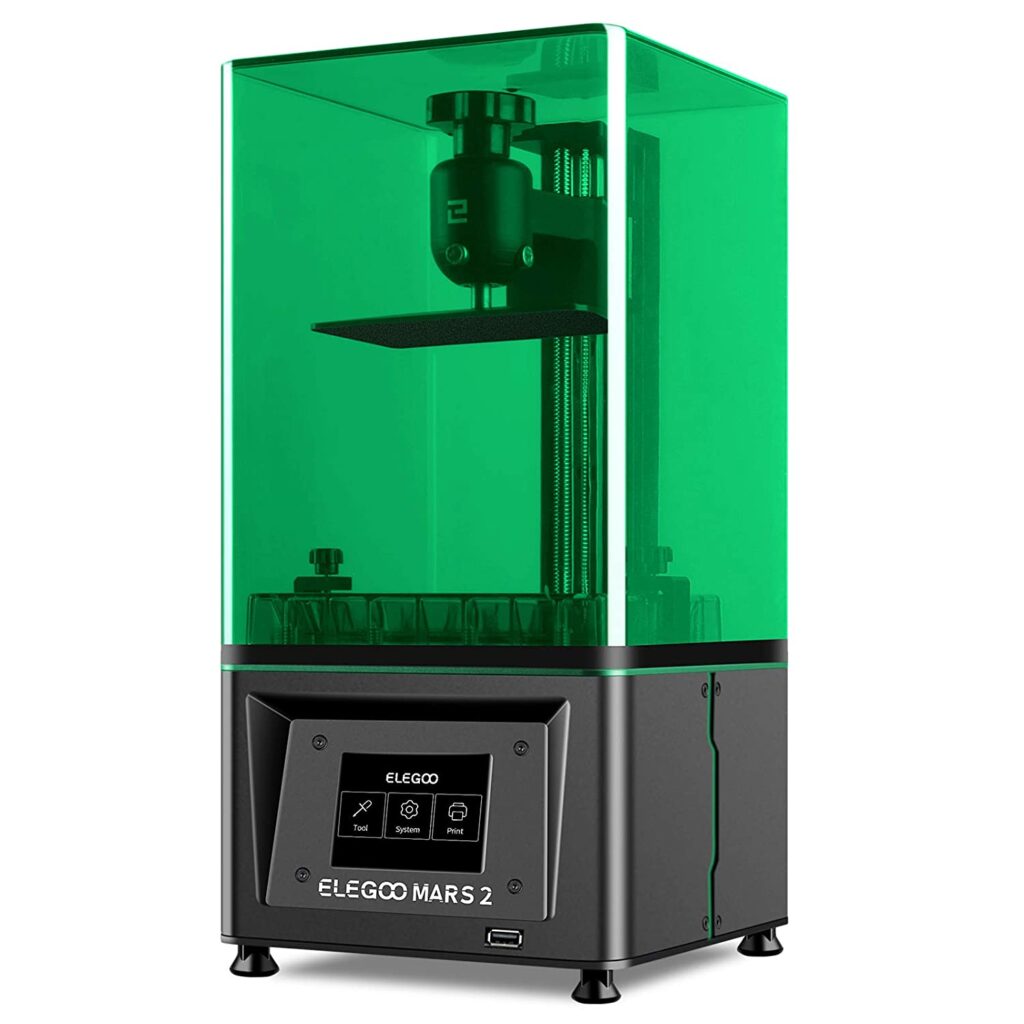
The Elegoo mars 2 is a small and affordable lcd 3d printer. With this printer prints will turn out great and in a faster time. The original elegoo mars was a popular 3d printer and now they have just released the 2, which has some upgrades from the previous model.
Some notable features of this printer is the touch screen on the front to control the printer. And the 2K display that is used for high resolution quality prints. The printing display is said to have a longer life span than the company’s previous model.
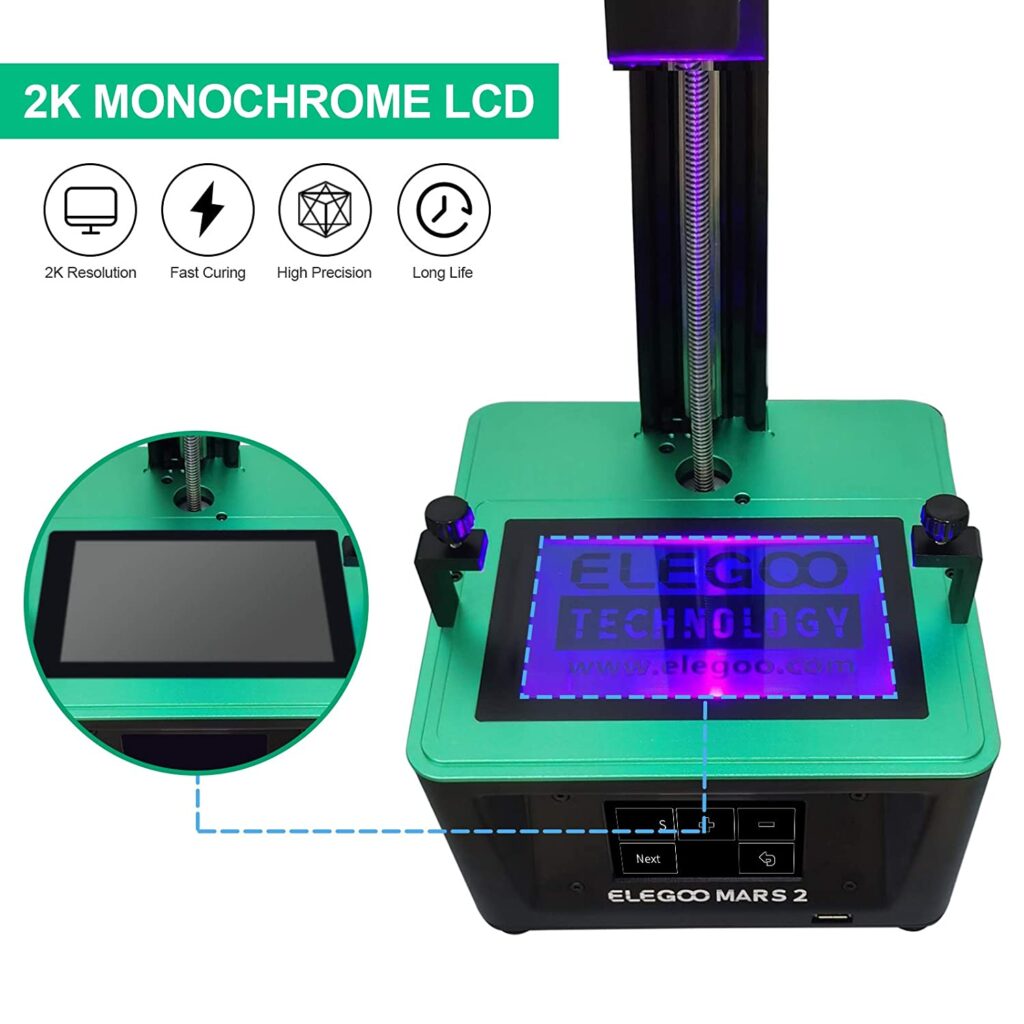
Build volume: 5.08(L)*3.15(W)*5.91(H) inches or 129(L)*80(W)*150(H) Millimeters
Price and where to find: $225,
AnyCubic Photon Mono
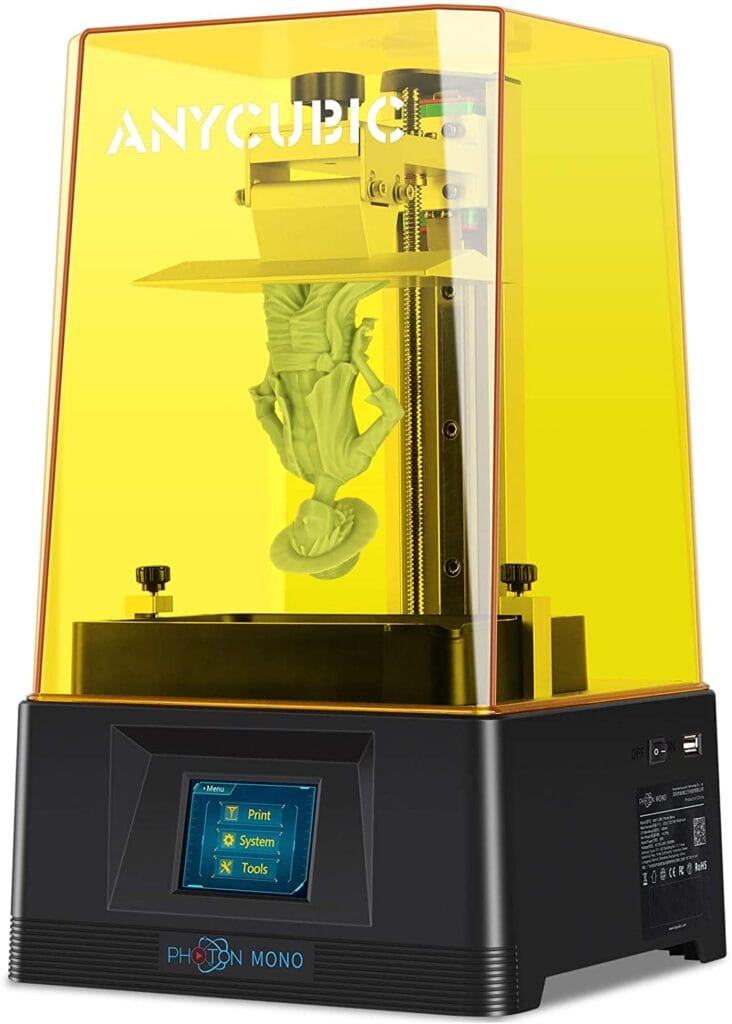
Many users have talked about how easy this printer is to use in reviews we had read. The photon Mono is a great printer for beginners and is at a great price point for those looking to get into the hobby. Some notable features of this machine is the touch screen on the front of the printer to control and print from it.
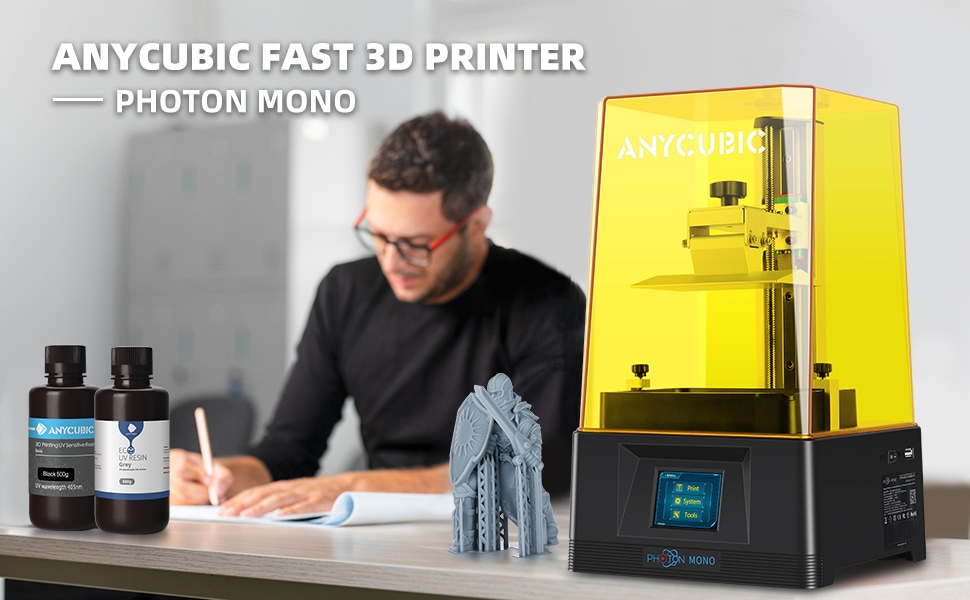
The mono part of the anycubic photon means that the printer is able to print faster than its counter parts. Getting and upgraded printer from the get go is recommended, not only to save you time and money. The anycubic photon mono gets you more life out of the lcd display and allows for faster printing.
The anycubic photon offers a pretty decent build quality, and just works for printing miniatures or anything in the similar shape. One disappointing thing about these DLP printers is that one of the axis’s tends to lack in space, in this case the X axis only goes to 3.24 inches or 80 millimeters.
Build Volume: 5.11×3.14×6.5 inches or 130x80x165 millimeters
Price: $240,
Professional Resin / SLA 3D Printers
Form Labs Form 3
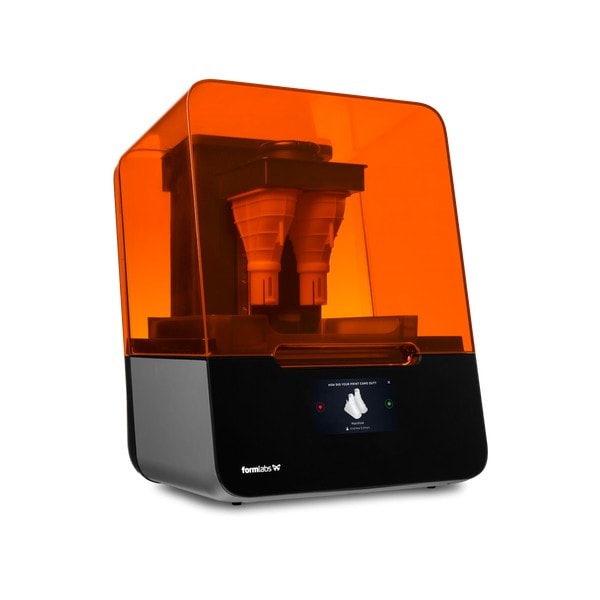
The form 3 is the newest SLA 3d printer from form labs. Form labs has been in the industry for over 10 years. The form lab printers are known as some of the best 3d printers in the hobbyist space. There newest offering the form 3 is a great printer for printing anything including miniatures. The form 3 received an upgrade over their past generation form 2, where the printer uses low force system to remove the print from the build plate each layer. Because of this new technology it makes 3d printing miniatures easier and more reliable than ever before.
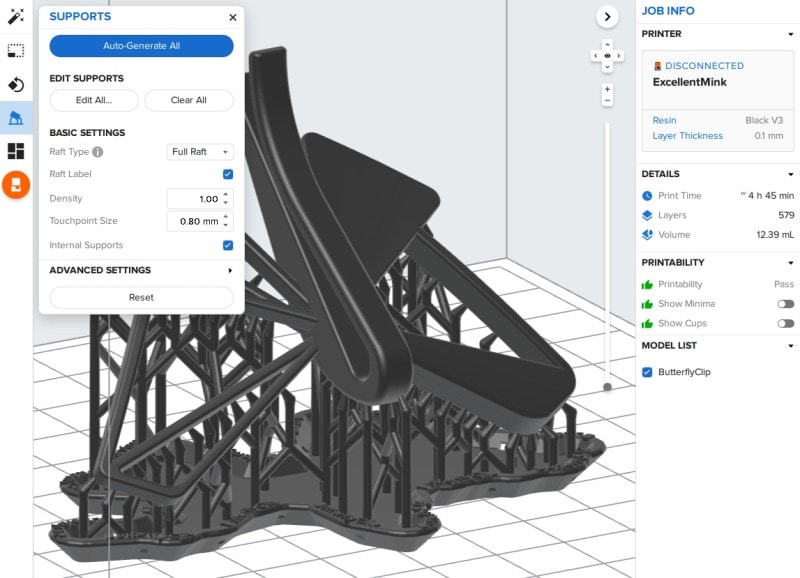
The form 3 uses a proprietary slicer known as Pre Form. The slicer is well made and is helpful when printing. With just one click you can have any object imaginable ready to be printed with their one click print feature. This software automatically places supports and rafts, so there is no learning curve, you can get right into printing what you want.
Purchase a Form 3 at FormLabs.com, starting at $3500 USD.
3D Systems ProX 800
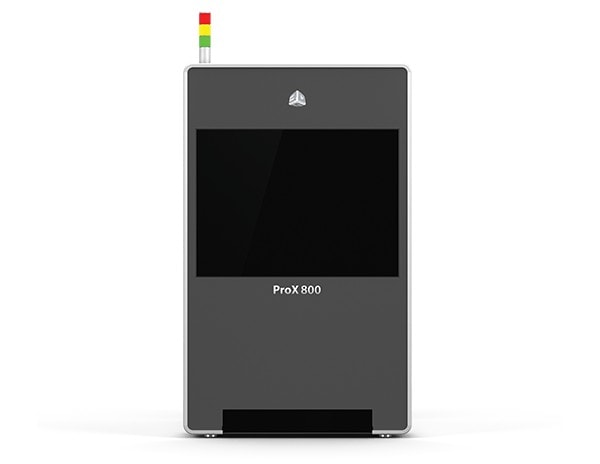
The ProX 800 by 3D systems is the top notch SLA 3D printer on the market right now. One of these will set you or your business back a hefty chunk of change. The printer has one of the largest build volumes on the market which will allow up to 650 x 750 x 550 mm (25.6 x 29.5 x 21.65 in) prints.
The ProX 800 is one of the best SLA 3D printers money can buy. While we do not expect the average consumer to be purchasing one of these, businesses that specialize in printing miniatures or anything that needs crazy detail, we recommend this printer because of the capabilities it has.
Price Starting at $200,000 at 3D systems
Post Processing
Washing
Resin printing has one downside to it. Prints from fdm printers will be ready to use right after printing. That is not the case with resin printers. This is a thing because the printer has not cured the resin all the way and can have excess resin still on the model. To get rid of this excess resin we can wash the part in isopropyl alcohol, this causes all the excess resin to be washed off.
Curing
Curing your part is also another important step in the post processing process. Once you have washed your part, it still is not all the way solid, to fix this we cure the part using UV rays to completely solidify the resin and create a finished part. Without curing your resin your model can be significantly weaker than a cured part. Not to mention the safety factor, you want to remove as much uncured resin as possible to avoid contact with the skin, because if left uncured it can still cause irritation to the skin if handled without gloves.
After you have washed and cured your part, it is done. You may have to remove the supports if necessary on your model. This can be done before or after post processing. It is usually left up to the user weather they do it before or after. Many community members say it often depends on the type of resin you are using to decide whether to do it before or after. We have found it is easiest to do after as the model is no longer slippery because of the uncured resin. This makes being precise with the side cutters easier.
Finishing
Another step you can take when post processing your parts from your printer is to sand them down to make a nice surface finish. Resin parts typically come of the printer very nice, but very once and a while there many be a blemish or thing you want fixed up. Sanding resin down can lead to even better surface finishes. A great way to do this is with a variety of grits of sand paper and small files. Investing in a set of small files will be helpful if you get into miniatures because there are often times where supports are left in a tight hard to get to spot where a small file can make quick work of it.
Form Wash & Cure
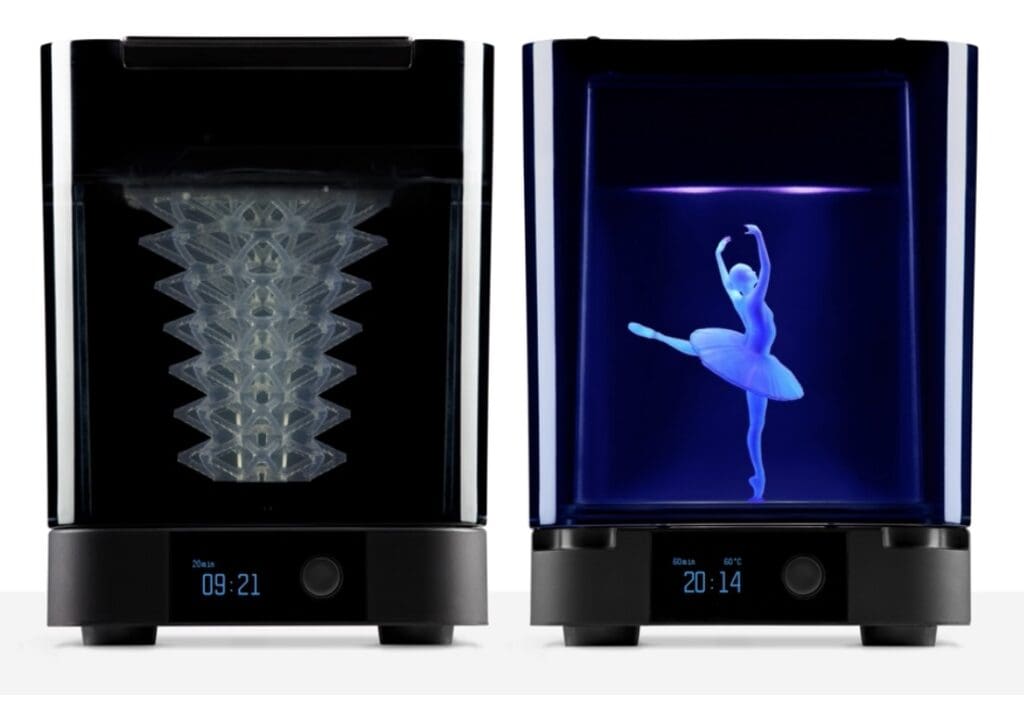
The form wash and form cure are a ready out of the box ready to go solution for post processing your SLA 3d prints.
To get started with this all you need to supply is the isopropyl alcohol, for the form wash. It requires more than a gallon of alcohol, a great place to find isopropyl alcohol in large quantities is on chemical supply websites.
The form wash and cure are specifically designed for use with a form labs printer, because the build platforms from the printers slide into these machines for the washing process.
Other Post Processing Options
There are many other options to post processing other than what Form Labs offers. We like this because of the simplicity of use. You can easily create some sort of do it yourself post processing system by buying certain parts and sort of jerry rigging your own system together.
Do it yourself wash station
To get started you are going to need to buy some 99% Isopropyl alcohol and a safe container that can be sealed after use. You want a container that can seal up because other wise all of your isopropyl will evaporate into thin air.
Do it yourself cure station
To cure your parts all you need is UV rays. UV rays can be dangerous if you do not use the right safety recommendations. For this it is possible to use a nail drier that has UV LEDs inside of it. Or the cheaper method is to leave your parts out on a sunny day to cure as the sun gives of UV rays.
To make something like a cure station yourself you can buy a UV LED off of amazon and find a old shoe box or shipping box and some tin foil. First start by coating your shoe box or shipping box with the tin foil. Then poke some small holes for the UV LEDs to fit in and shine into the box. For easy use you can wire the LEDs up to a switch and easily control when the LEDS turn on and off. The key with your box is to not let any UV rays out of it, because they can potentially harm your eyes if you are not wearing the right glasses.